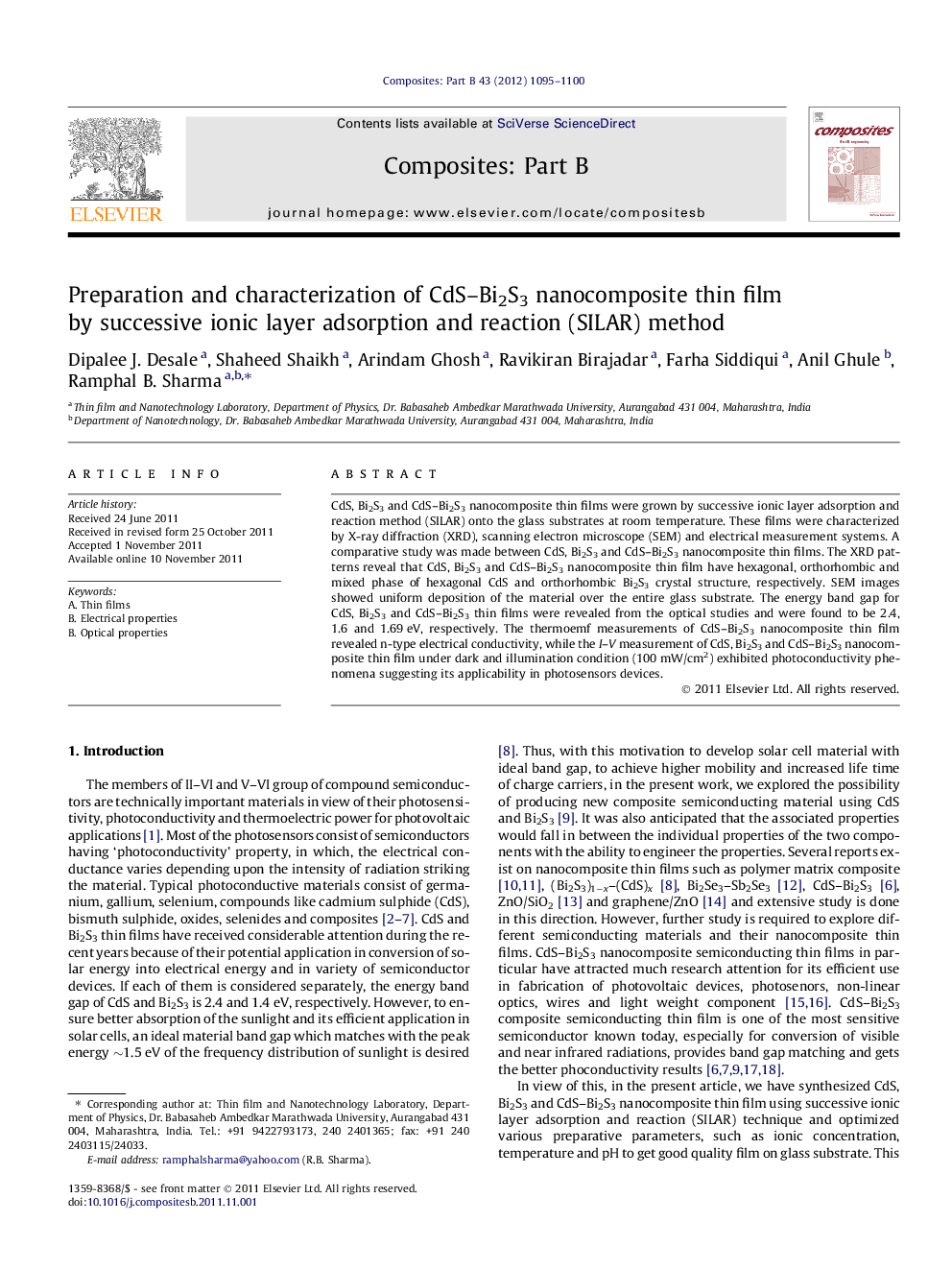| Article ID | Journal | Published Year | Pages | File Type |
|---|---|---|---|---|
| 818613 | Composites Part B: Engineering | 2012 | 6 Pages |
CdS, Bi2S3 and CdS–Bi2S3 nanocomposite thin films were grown by successive ionic layer adsorption and reaction method (SILAR) onto the glass substrates at room temperature. These films were characterized by X-ray diffraction (XRD), scanning electron microscope (SEM) and electrical measurement systems. A comparative study was made between CdS, Bi2S3 and CdS–Bi2S3 nanocomposite thin films. The XRD patterns reveal that CdS, Bi2S3 and CdS–Bi2S3 nanocomposite thin film have hexagonal, orthorhombic and mixed phase of hexagonal CdS and orthorhombic Bi2S3 crystal structure, respectively. SEM images showed uniform deposition of the material over the entire glass substrate. The energy band gap for CdS, Bi2S3 and CdS–Bi2S3 thin films were revealed from the optical studies and were found to be 2.4, 1.6 and 1.69 eV, respectively. The thermoemf measurements of CdS–Bi2S3 nanocomposite thin film revealed n-type electrical conductivity, while the I–V measurement of CdS, Bi2S3 and CdS–Bi2S3 nanocomposite thin film under dark and illumination condition (100 mW/cm2) exhibited photoconductivity phenomena suggesting its applicability in photosensors devices.
